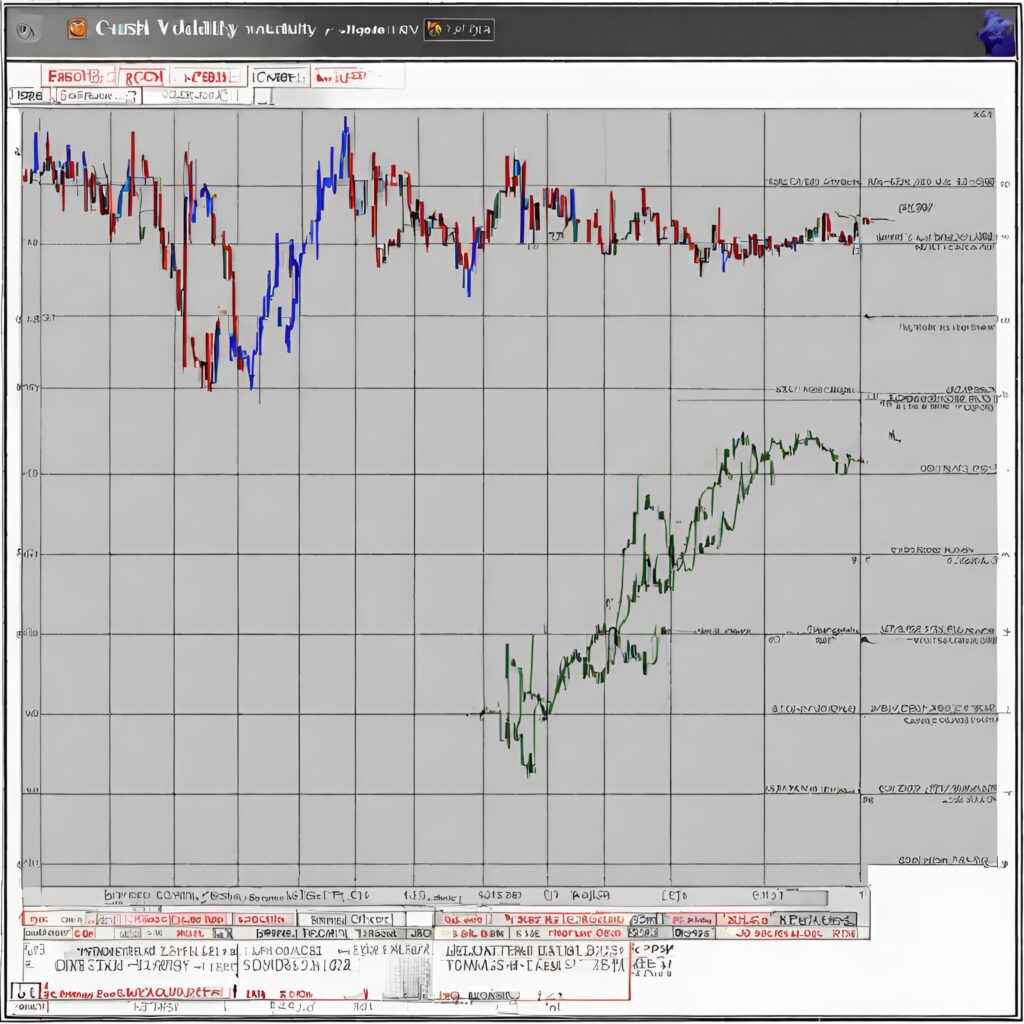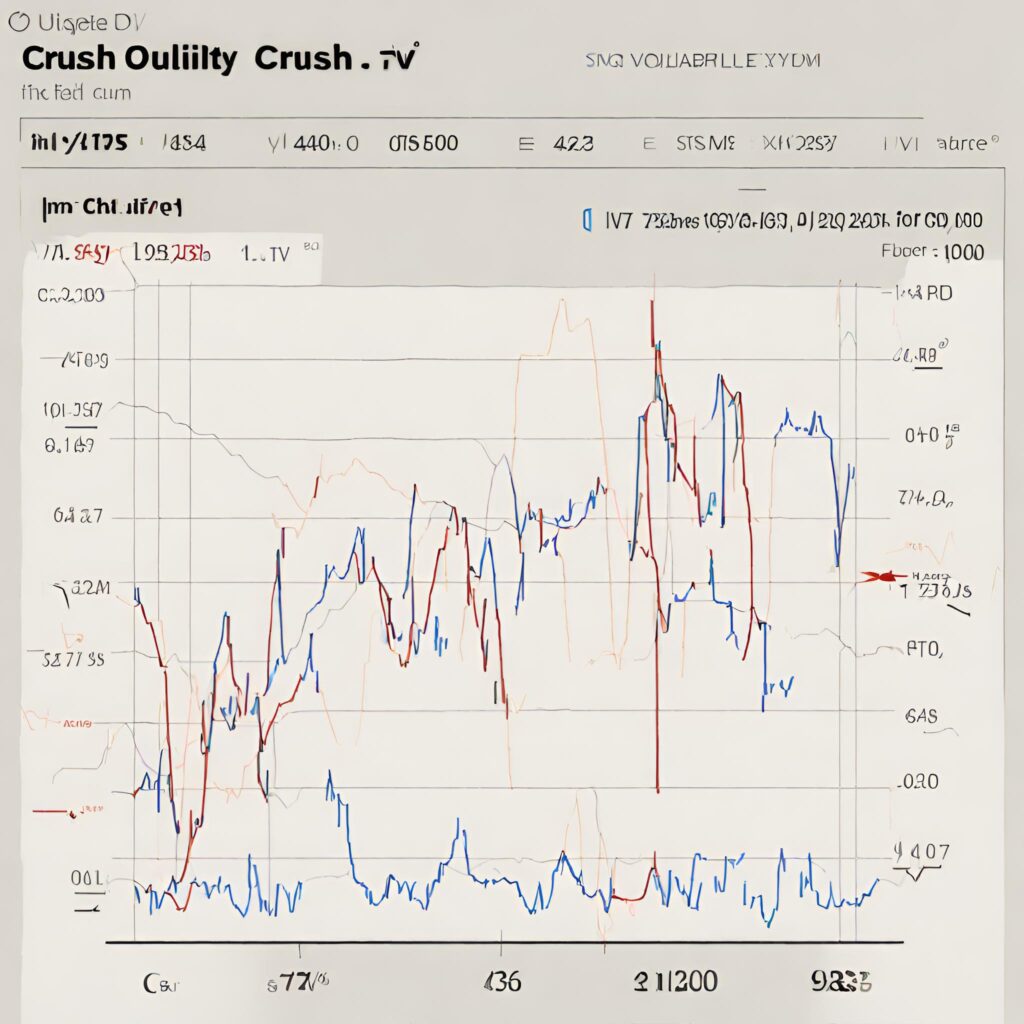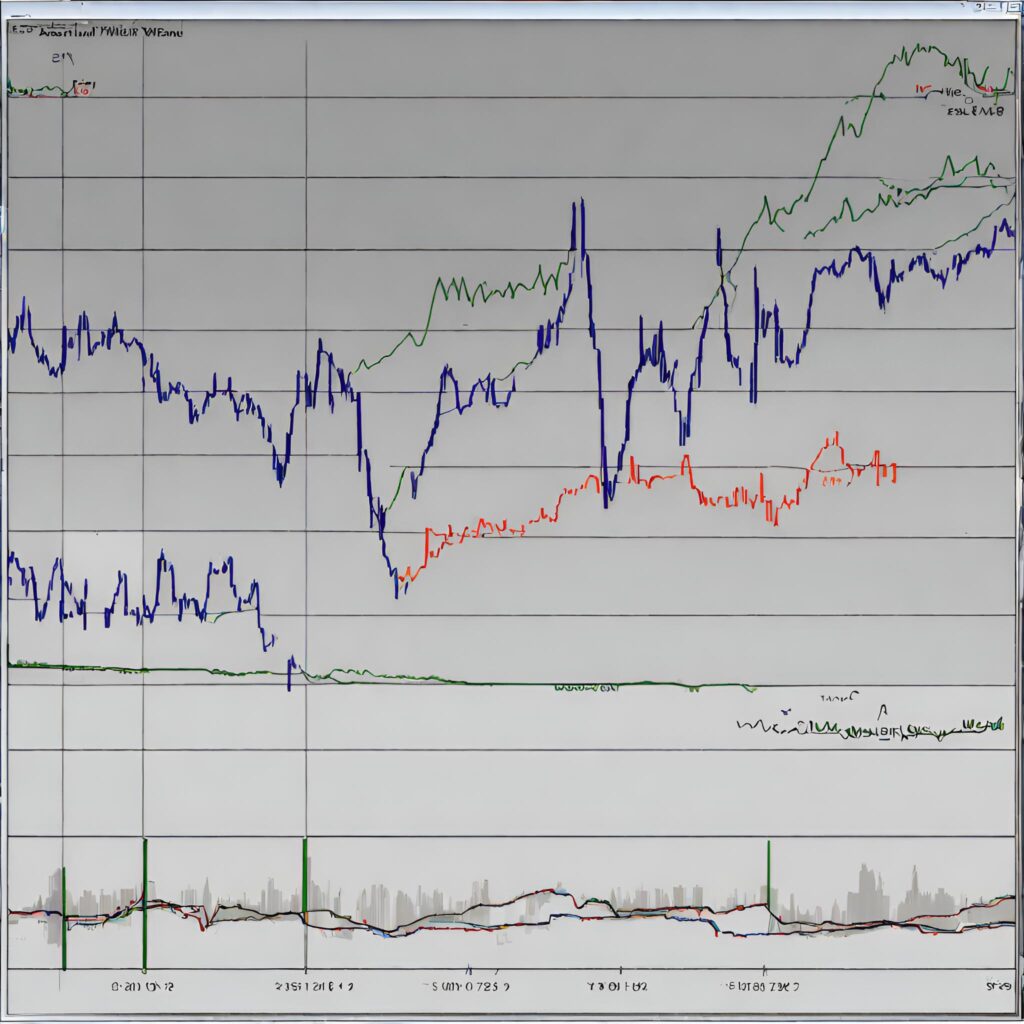IV crush refers to a sharp drop in implied volatility of options after a key event or news release. This decline often leads to a significant decrease in option premiums. Understanding implied volatility (IV) is crucial for options traders as it indicates the market’s forecast of a likely movement in a security price. Implied volatility reflects the expected volatility of a stock over the life of an option. As events such as earnings announcements or product launches approach, implied volatility tends to increase, given the uncertainty these events introduce.
Once the event passes and the uncertainty resolves, IV tends to fall rapidly—a phenomenon known as IV crush. This effect can catch traders off guard, leading to substantial losses for those holding long option positions, particularly if they’re not strategic about the timing of their trades. Experienced traders monitor IV closely to manage risk and position themselves to capitalize on or guard against IV crush.
Understanding Iv Crush
Options traders often face a phenomenon that can dramatically affect the profitability of their trades – Implied Volatility Crush (IV Crush). Understanding this concept is critical because it has the power to wipe out profits or amplify losses in the blink of an eye. In the world of options trading, staying ahead involves not just predicting market direction, but also anticipating changes in market sentiment. Let’s delve into the intricacies of IV Crush, breaking it down so you can navigate your trades with confidence.
Definition Of Implied Volatility (iv)
Implied Volatility, or IV, is a key metric in options trading. It represents the market’s forecast of a likely movement in a security’s price. Essentially, IV is an estimate of the future volatility of the underlying stock or index. A higher IV indicates that the market expects significant price swings, whereas a lower IV suggests a more stable price outlook. Traders rely heavily on IV because it directly influences options premiums—the higher the IV, the more expensive the options.
The Mechanics Of IV Crush
IV Crush occurs when there’s a substantial drop in implied volatility, leading to a steep decline in options premiums. This often happens after a major event or news release, like an earnings report, where the anticipated move in the asset’s price has already occurred or wasn’t as dramatic as expected. The uncertainty that was driving the IV higher is suddenly gone, causing IV to plummet. Understanding the mechanics behind this can help traders plan their strategies more effectively, especially when it comes to the timing of trade entries and exits.

Why “iv Crush” Is Pertinent To Options Trading
- Options Pricing: IV Crush directly affects the price of options—both calls and puts. A sudden drop in IV can lead to significant losses for option holders, particularly those with long positions.
- Trading Strategies: Traders employ strategies like buying options before earnings announcements in anticipation of a spike in IV. If an IV Crush occurs instead, those strategies can backfire, leading to a critical need for traders to understand and anticipate IV changes.
- Risk Management: Recognizing the probability of an IV Crush can alter a trader’s approach to risk management. Instead of focusing solely on the direction the market might take, traders must also consider the potential impact of volatility collapses on their positions.
Mastering the dynamics of Implied Volatility Crush is a fundamental aspect for any options trader aiming to optimize their trading outcomes and protect their capital against unexpected market behavior.
Iv Crush Explained With Earnings
Understanding the dynamics of Implied Volatility (IV) is crucial for traders, especially when navigating the sharp swings around earnings reports. One of the most significant phenomena associated with earnings season is the Iv Crush, a concept that can spell the difference between profit and loss in options trading. This section dives into the mechanics of this phenomenon, exploring how IV builds up before earnings announcements and why it plummets afterward, supported by real-world examples to bring the concept to life.
As earnings announcements approach, uncertainty looms among traders and investors. Amidst speculation, Implied Volatility tends to rise, reflecting the increased options premiums due to the anticipation of a significant move post-earnings.
- Investors brace for potential surprises in earnings reports.
- Options traders bid up premiums, leading to a surge in IV.
- This build-up in IV is often speculative, and detached from actual performance.
Following the earnings reveal, Implied Volatility typically declines sharply, manifesting the IV crush. Several factors play into this sudden drop:
- Earnings uncertainty is resolved, resulting in decreased option premiums.
- Market participants adjust their expectations to the new information.
- Time decay accelerates, especially for short-term options.
| Company | Pre-Earnings IV | Post-Earnings IV | % Change |
| Company A | 85% | 35% | -58.82% |
| Company B | 70% | 30% | -57.14% |
| Company C | 60% | 25% | -58.33% |
In these case studies, each company experienced a significant Iv Crush following their earnings report, demonstrating the volatility’s sensitivity to such events and the impacts on options pricing.
Evaluating Post-earnings Volatility
Understanding the dynamics of post-earnings volatility, often referred to as an “IV Crush” in the trading world, is a critical skill for investors and traders alike. This phenomenon occurs when implied volatility (IV) plummets immediately following a company’s earnings report. The real challenge lies in navigating the turbulence it can cause in the market. Let’s delve further into the components that guide this volatility, the impact of market anticipation versus actual results, and strategies traders can adopt when faced with these conditions.

Components Influencing Volatility Post-earnings
Several key factors drive the volatility seen after a company reveals its performance. These include but are not limited to:
- Liquidity: The ease with which assets can be bought or sold.
- Historical Trends: Previous post-earnings reactions.
- Guidance: Future earnings projections provided by the company.
Each of these components, combined with trader sentiment, creates the unique volatility signature of each earnings report.
The Role Of Market Expectations And Actual Results
Earnings announcements are a battleground of anticipation versus reality. Traders analyze pre-earnings IV to gauge the market’s expectations. Post-earnings, it’s a matter of how well the company’s actual performance aligns with these expectations.
Outcomes significantly different from the market consensus lead to greater volatility. A narrower gap between expectations and actual results typically results in a more muted reaction and less severe IV Crush.
How Traders Can Interpret And React To Volatility
For traders aiming to navigate post-earnings volatility, understanding the nuances of IV Crush becomes a vital part of their strategy. Actions to consider include:
- Utilizing volatility indicators and historical data for informed predictions.
- Employing options strategies that benefit from expected volatility changes.
- Setting realistic profit targets and stop-loss orders to manage risk.
Timely analysis and swift action enable traders to harness post-earnings volatility to their advantage.
Strategies For Navigating Volatility
Understanding the intricacies of IV Crush is pivotal for anyone involved in the options market, especially during earnings season. Implied Volatility (IV) surges ahead of earnings reports due to the anticipated uncertainty and potential stock price movement. However, it typically plummets right after the reports are released—a phenomenon known as the IV Crush. Skilled traders employ various strategies to navigate the terrain of volatile markets. Let’s explore some effective approaches to steer through these fluctuations.
Pre-earnings Options Strategies To Consider
Before a company reports earnings, market players can adopt specific options strategies that take advantage of the escalating IV. Straddles and strangles could be lucrative for traders who predict significant price movement but are unsure of the direction. Conversely, selling premium through Iron Condors or vertical spreads could be beneficial for those expecting a mild reaction to the earnings report.
- Long Straddle: Purchase both a call and put option at the same strike price and expiration date. Ideal for expecting significant price movement.
- Short Straddle: Sell both a call and put option at the same strike price and expiration date. Optimal when betting on a subdued price action.
- Long Strangle: Buy a lower-strike put and a higher-strike call, banking on a dramatic price shift.
- Iron Condor: Sell an out-of-the-money put spread and call spread to capitalize on range-bound stocks with high IV.
Adjustments To Make Post-earnings
After earnings announcements, as IV crushes, it’s an opportune moment to reassess and adjust existing positions. Traders holding long volatility positions may find it essential to capitalize on any favorable moves swiftly or adjust their trades to mitigate potential losses. Conversely, those with short volatility positions may benefit from the rapid decline in option premiums. Tactics such as rolling out positions, closing out profitable trades, or managing losing trades swiftly can be effective post-earnings.
| Action | Strategy |
| Long Volatility | Consider taking profits quickly or reducing position size to limit exposure. |
| Short Volatility | Analyze positions for potential early profit-taking or wait out to expiration. |
Long-term Vs Short-term Volatility Considerations
In contrasting long-term and short-term volatility, traders must adapt their strategy according to the time frame. Short-term IV typically escalates before earnings announcements and dissipates immediately after, rendering short-dated options a popular choice for playing earnings. Long-term volatility, understood through Historical Volatility and option pricing models, dictates broader portfolio adjustments and plays a crucial role in long-term options strategies such as LEAPS.
Success in navigating through the treacherous waters of IV Crush hinges on a balanced mix of both timely and strategic decision-making. Traders are advised to stay well-informed, vigilant, and be prepared to act according to how events unfold, with a keen eye on both immediate and distant horizons of market behavior.
Managing Risk With IV Crush
When diving into the world of options trading, the term “IV Crush” is impossible to overlook. Implied Volatility (IV) Crush refers to the rapid decline in the level of implied volatility of an asset, leading to a substantial drop in options pricing. It usually happens right after a significant event, such as earnings announcements or major economic news. Knowing how to manage risk during an IV Crush is essential for traders to protect their portfolios and potentially capitalize on these tumultuous periods. With strategic risk assessment, diligent portfolio management in high volatility scenarios, and the use of accurate tools and indicators, traders can navigate through an IV Crush with confidence.

Risk Assessment Strategies For Options Traders
Successful options traders constantly gauge and mitigate risks that could jeopardize their investments. Here are a few strategies to do just that:
- Historical Volatility Analysis: Compare current IV levels with historical volatility to assess how extreme the current environment is.
- Options Greeks: Utilize Delta, Gamma, Theta, and Vega to anticipate how price changes and time decay affect the premium.
- Probability Calculations: Determine the probability of profit for options trades to make informed decisions.
Portfolio Management In High Volatility Scenarios
When confronted with elevated volatility, options traders must be astute in managing their portfolios. Adopt these practices to stay ahead:
- Diversification: Spread risk across various assets and options strategies.
- Position Sizing: Keep positions to a size that won’t make or break the portfolio.
- Stress Testing: Conduct hypothetical stress tests to unearth potential weaknesses.
By adhering to these approaches, a portfolio can become more resilient against the unpredictable nature of the markets.
Tools And Indicators To Monitor IV Levels And Crush Events
Leverage these tools and indicators to be well-prepared for and responsive to IV crush events:
| Tool/Indicator | Function |
| Options Chains: | Show current IV for different expirations and strikes. |
| IV Rank & IV Percentile: | Provide a statistical context for current IV levels. |
| IV Histogram: | Illustrates IV over time, highlighting any extremes. |
| Economic Calendar: | Keep track of upcoming events that could trigger an IV Crush. |
Mastery of these tools and keen observation of indicators empowers traders to act proactively rather than reactively in the face of IV Crush.
Frequently Asked Questions Of IV Crush
To handle IV crushes, anticipate volatility declines post-events, close positions pre-event, manage size strategically, diversify, and select expiration dates wisely.
The best IV crush strategy involves selling high implied volatility options before earnings and buying back after the event when volatility drops. This exploits the anticipated decrease in option prices following significant announcements.
Option premiums typically plummet during an IV Crush as the anticipated event passes and market uncertainty diminishes, affecting implied volatility.
IV Crush, or Implied Volatility Crush, refers to the rapid decline in implied volatility of options after a significant event, reducing option prices.
High IV, or intrinsic value, can be either good or bad. It’s positive for investors holding an undervalued stock, indicating potential growth. Conversely, for options traders, high IV suggests expensive premiums and potential for volatility.
To profit from implied volatility, trade options. Sell options during high volatility for premium income. Buy options when volatility is low, and profit from increases. Employ strategies like straddles or strangles to capitalize on volatility shifts. Always consider market conditions and risks involved.
While IV Crush often occurs post-event, it can be anticipated by tracking elevated implied volatility levels ahead of known events like earnings reports.
Navigating the complexities of IV Crush is crucial for options traders. It’s about timing and strategy, ensuring you play volatility to your advantage. Remember, awareness and experience are your allies. As markets fluctuate, stay educated and agile to mitigate risks and capitalize on IV Crush scenarios.
Keep learning, keep trading, keep succeeding.
